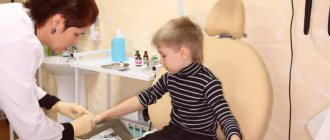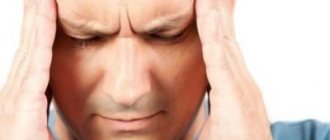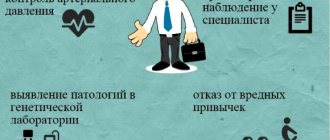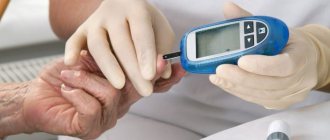Diseases of the autonomic nervous system are quite unpleasant, since a person cannot consciously control it. Such pathologies include vegetative-vascular dystonia (VSD), or as it is also called polioetiological syndrome. It manifests itself in the form of a huge complex of symptoms, which for convenience have been divided into groups. Many people live with vegetative-vascular dystonia, but it is quite possible to get rid of it forever at home. To do this, you will have to be fully examined, and then undergo a course of therapy and change your lifestyle.
Vegetative-vascular dystonia occurs due to many factors. Among them are stress, hormonal changes, injuries, strokes and pathological processes in the endocrine system. Sometimes the key reason is heredity, for example, when one of the relatives had hypertension or neurosis. You can find out how to treat vegetative-vascular dystonia from your attending physician, but only after a detailed examination and examination.
The course of therapy depending on the manifestations of the disease
A disease such as VSD is not easy to cure, much less get rid of forever, since it is difficult to understand why it occurs. Pathologies associated with the autonomic nervous system are easier to prevent than to treat. To do this, it is recommended to follow preventive measures and avoid mental and physical overload, especially if there is a hereditary predisposition.
A pathological process occurs due to a disruption in the relationship between the nerve concentration in the brain, the endocrine system and the hypothalamus. This problem is often observed in teenagers as they experience severe mental and physical stress combined with a surge in hormones due to puberty. Because of this, babies can develop ulcers, hypertension, and coronary artery disease.
If you do not treat VSD in a child, you can ruin his whole life, as his ability to work decreases and various chronic pathologies associated with internal organs arise. This disease is characterized by the appearance of crises, that is, the intensification of old or the emergence of new symptoms. They are divided into several types:
- Adrenaline. This type is characterized by tachycardia (rapid heartbeat), headache, feeling of cold and trembling (tremor) in the lower and upper extremities. A person suffers from a constantly haunting feeling of fear and overexcitement, and over time they develop into panic. Against this background, a person develops high blood pressure, which reaches 180 mm. Treatment for this type of crisis is reflexive. The patient should breathe deeply and smoothly, and when exhaling, a 2-second delay should be made. The procedure is repeated 6-8 times. The massage worked well, especially the eyes. It should be performed with your index fingers for 2 minutes. A massage in the neck and collarbone area can help get rid of the crisis. While at home, you can apply mustard plasters. They are applied to the neck from the back. If the effect is not achieved, then you can use medications, for example, Corvalol or Diazepam;
- Vagoinsular. It is characterized by general weakness, headache and dizziness, and these symptoms occur during prolonged fasting. Sometimes visual acuity may temporarily deteriorate. Secondary signs include strange sounds from the stomach, frequent visits to the toilet due to a constant urge, increased activity of the sebaceous glands and lack of oxygen. During a vagoinsular crisis, the pressure often drops down to 60 mm, which is why the patient may lose consciousness. You can get rid of this condition by massaging your feet, especially the central dimples. Rubbing the ears helped some patients well. To calm down, you can drink sweet green tea, and in extreme cases, Corvalol;
- Mixed. It is characterized by all the listed symptoms, and they periodically spontaneously replace each other. You can get rid of this type of crisis by determining which symptoms are the main ones at this moment and applying the methods already described to eliminate them.
General symptoms
In addition to specific manifestations, there is a certain set of symptoms that is found in almost all patients with VSD. It is this that allows us to identify the nervous origin of the disease.
These signs of vegetative-vascular dystonia include:
- Increased anxiety, there are acute attacks of panic, which a person cannot get rid of on his own;
- Frequent dizziness;
- Weakness;
- Blood pressure disorders (usually low, but there are cases of VSD with high blood pressure);
- Loss of consciousness;
- Temperature changes;
- Heart rhythm disturbances.
If several signs are present, the doctor will prescribe an additional examination, which will help clarify the diagnosis and prescribe treatment.
Features of the course of treatment and lifestyle changes
Treatment of VSD at home is possible, but this requires the use of a whole range of procedures. To begin with, it is recommended to think through your schedule for the day so as not to overexert yourself, but at the same time have time to do all your business. It is recommended to leave time in it for physical education. According to experts, yoga helps well against vegetative-vascular dystonia. You can also get rid of the disease through proper nutrition, diet, physiotherapy, outdoor recreation, and also with the help of medications.
For proper rest, you need to sleep at least 6-8 hours. Healthy sleep will calm the nervous system and allow it to recover. For better relaxation, you can watch your favorite movie, take a bath and listen to relaxing music. The room where the patient is located should be well ventilated, and it is better to choose bright wallpaper and furniture in the room. The same advice applies to clothing. Before going to bed, doctors strongly advise taking a walk for 15-20 minutes in the fresh air.
The diet must be adjusted. According to the new diet, you will have to give up alcohol, spicy and fatty foods, coffee, strong tea, fast food and other foods that negatively affect the nervous system. Instead, you can add more healthy vegetables and fruits to your menu. Due to impaired tone in blood vessels due to the development of vegetative-vascular dystonia, you should consume more foods that contain potassium, calcium and magnesium. Among them are legumes, walnuts, dill, buckwheat porridge, etc. It is advisable to eat at the same time every day and it is better to do this 5-6 times in small portions. It is recommended not to eat anything for about 2-3 hours before going to bed so that the stomach has time to absorb the food.
A popular method today is fasting days, for example, 1 day a week.
There is a lot of controversy about nutrition. Some experts say that on this day you need to sit on water or kefir alone, while others say the opposite. They state that food should be present in minimal quantities, for example, in the form of oatmeal. That is why it is advisable to discuss this issue with your doctor before using this method.
How to get rid of vegetative-vascular dystonia (VSD)
Vegetative-vascular dystonia is a disruption of the autonomic system, which is responsible for two important functions:
— internal environment of the body (body temperature, heart rate, breathing rate, sweating, metabolic rate, etc.);
- mobilization of body functions (adaptation to the external environment, stress, changes in weather, time of day, climate, physical and mental stress).
Symptoms of VSD
- dizziness,
- unreasonable feelings of anxiety and panic,
- hidden depression,
- persistent insomnia,
- paroxysmal headaches,
- trembling of the hands or the whole body,
- frequent urination,
- obsessive phobias (agoraphobia, as a rule, fear of the place where the attack first occurred, etc.),
- fast or slow heartbeat,
- numbness of hands and feet,
- derealization,
- depersonalization,
- labored breathing,
- hot flashes to the head,
- weakness and weakness,
- impaired coordination of movements,
- nausea and vomiting,
- fainting,
- fear of dying and going crazy.
Causes of VSD
1. Heredity (related to the characteristics of the constitution, nervous and autonomic systems). It often happens that VSD develops during pregnancy and childhood. It is very important that the child lives in love and harmony. It’s not so rare that in families where quarrels and scandals, as well as assault and mutual insults are a frequent “guest,” a child may be under emotional stress or suffer a nervous breakdown.
2. Stress and nervous overload are one of the most common causes. Stress at work, in traffic, at home. Chronic lack of sleep. All this has a very detrimental effect on the autonomic system.
3. Bad habits (sedentary lifestyle, smoking cigarettes, alcohol, drugs, etc.).
4. Hormonal changes (puberty, menopause, etc.).
5. Spinal injuries.
6. Stroke, tumors, brain damage, trauma.
7. Disease of the adrenal glands and thyroid gland.
How to get rid of a panic attack on your own
Below are common methods of treatment with folk remedies. In any case, everything is individual, you need to listen to your body and not overdo it.
One of the most unpleasant moments of VSD is a panic attack.
How does a panic attack work?
A panic attack or crisis is a condition in which adrenaline is released into the blood.
According to statistics, 10-20% of the population have experienced a panic attack once in their life. This means that almost every fifth person experienced this crisis.
As a rule, a panic crisis appears under the same circumstances. This often happens in the morning when the body produces adrenaline during sleep, during the day at work, in transport, in shopping centers and in the evening when the body is tired.
The basic rule: to get rid of a panic attack, you need to stop being afraid of it. Don't feed the feeling of fear. You won’t even notice how quickly everything will fade away.
REPEAT: Just stop being afraid.











